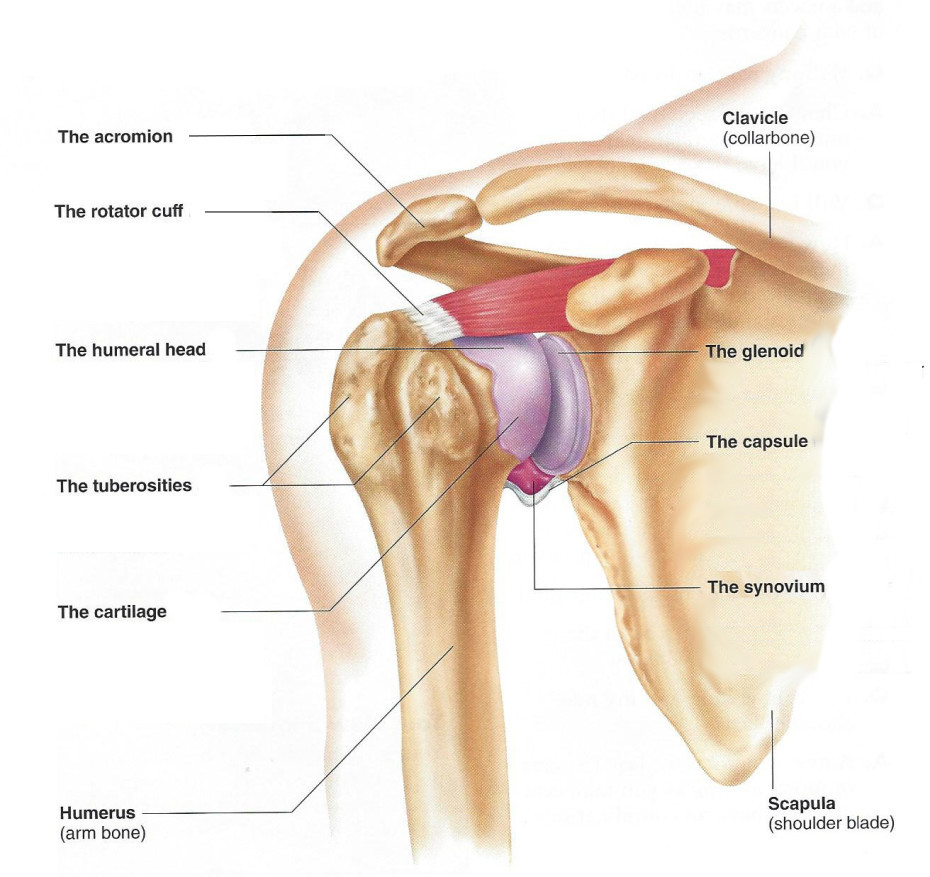Your shoulder–a ball-and-socket joint–is the most flexible joint in your body. The ball, or head, of the arm bone (humerus) rests against a small, shallow socket (glenoid). Muscles and other soft tissue hold the ball in the socket and allow you to move your arm up and down, to the side, across your body, and behind your back.
A Healthy Shoulder
When your shoulder joint is healthy, the ball glides smoothly in the socket. That’s because the ends of the bone are cushioned by a smooth covering (cartilage), and tissue (synovium) lines the joint. The muscles and tendons of the rotator cuff hold the head of the arm bone firmly in the socket and give you strength and flexibility.
Click Here To View PDF
- The acromion is the top part of the shoulder blade.
- The rotator cuff is a group of muscles and tendons that attach the arm bone to the shoulder blade and help the shoulder to move.
- The humeral bone is the top of the arm bone. It’s shaped like a ball and rests against the shoulder socket.
- The tuberosities are the points where the rotator cuff attaches to the arm bone.
- The cartilage is the smooth covering on the ends of the bones. It acts like a cushion, allowing the bones to move without pain.
- Humerus (arm bone)
- Clavicle (collarbone)
- The glenoid is the shallow socket that forms a cradle for the head of the arm bone.
- The capsule is a sheet of fibers that surrounds the joint. It is tough enough to keep the joint stable, yet flexible enough to allow it to move freely.
- The synovium lines the capsule and produces a fluid that lubricates the joint and keeps the ends of the bones from rubbing.
- Scapula (shoulder blade)

